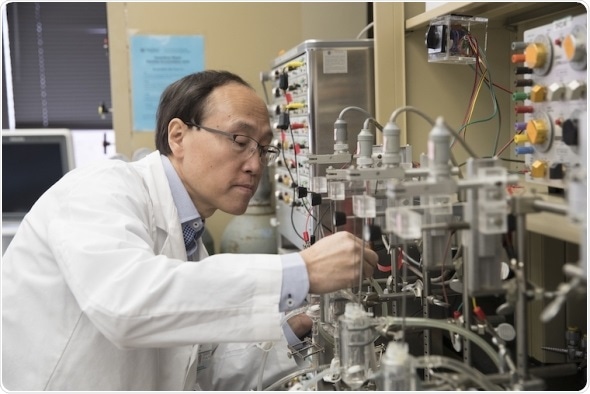
Pre-injury exercise reduces damage to both muscles and nerves, study finds
Exercise Expert Seeks to Prevent Damage Caused by Restoration of Blood Flow
Exercise can protect both muscle and nerves from damage caused by the restoration of blood flow after injury or surgery, new research from the University of Virginia School of Medicine shows.

UVA’s Zhen Yan, PhD, is a top expert on the cellular benefits of exercise. He is working to overcome the problem of ischemia reperfusion injury, in which the body is damaged by the restoration of blood flow after it has been cut off by injury or surgery.
UVA’s Zhen Yan, PhD, a top expert on the cellular benefits of exercise, and his team are working to better understand how the body is damaged by the restoration of blood flow – known as ischemia reperfusion injury – and to find ways to improve outcomes for people who suffer it, including surgery and trauma patients and soldiers injured on the battlefield. Their new finding shows that pre-injury exercise has substantial benefits in terms of preserving both muscle and nerve.
“Exercise-trained mice had a much better recovery, evidenced by less nerve damage, less muscle damage and less reduction of contractile function [in the muscle] immediately after injury and days later,” explained Yan, the director of the Center for Skeletal Muscle Research at UVA’s Robert M. Berne Cardiovascular Research Center.
The Danger of Ischemia Reperfusion Injury
Because of the damage caused by reperfusion injury, doctors now seek to limit the amount of time blood flow is cut off to no more than 90 minutes.
In his latest research, Yan and his team used a “reporter gene” he developed called the MitoTimer to understand the effects of reperfusion injury on muscle and nerves. The reporter gene allowed them to measure the amount of “oxidative stress” to the cells’ powerplants, mitochondria, when blood flow was restored.
They found that pre-injury exercise clearly reduced the damage to both muscle and nerve, but it did not significantly reduce the amount of oxidative stress.
While the mechanism for that protection is not yet understood, Yan’s previous research has shed light on what happens to muscle cells when blood flow is restored. He likens it to wires being disconnected from a circuit board. He’s even identified a compound that, in mice, helps protect the mitochondria in those circuit boards. “With this treatment, we found the circuit board, a structure called neuromuscular junction where nerve is physically connected with muscle for control of its contraction, was preserved,” he said. “The wires remained connected. The function is normal. Therefore, recovery is much faster.” This drug could potentially prevent nerve damage caused by the restoration of blood flow and speed patients’ recovery. (It is clear, however, that exercise training achieves this through a different mechanism.)
More work will need to be done before such a drug could be used in humans, but Yan thinks the discovery holds great promise. He envisions that the drug could be of tremendous use to the military, for example.
Yan, of UVA’s Division of Cardiovascular Medicine, plans to continue his investigation into both the drug and reperfusion injury in general as part of his larger studies into how exercise benefits our cells and human health.





















.jpg)












No hay comentarios:
Publicar un comentario